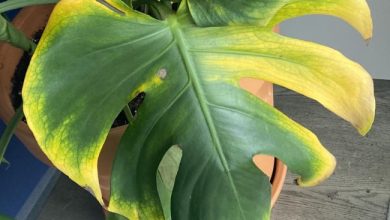How often and how to water my Begonias?
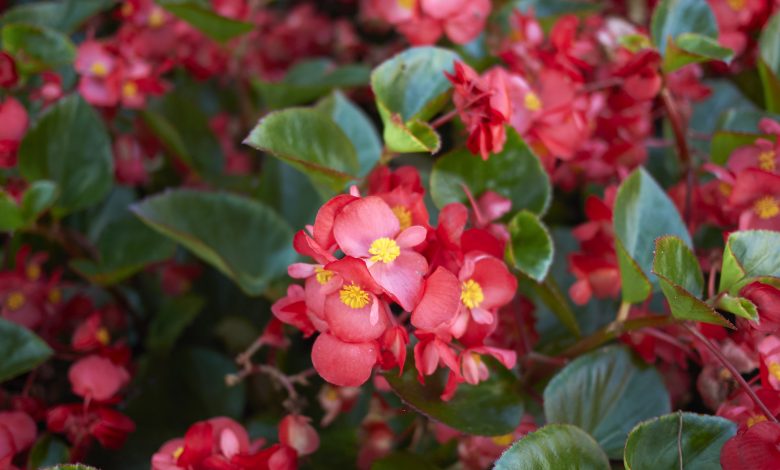
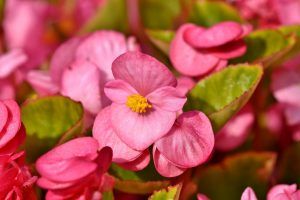 Exquisite blooms are possible to have in each season if you put in place a correct irrigation plan for begonias.
Exquisite blooms are possible to have in each season if you put in place a correct irrigation plan for begonias.
Water is essential to keep plants hydrated and make it easier for them to carry out their internal processes, such as photosynthesis.
Doing it correctly does not imply a great mystery, what is necessary is to consider the requirements of the species and the environmental conditions to be successful.
And we will talk about each of these points in today’s post that, if you have begonias at home, it will go like a glove.
Important points when watering begonias:
- Irrigation frequency: in summer you may need up to 3 irrigations in a week, while in winter they can be reduced to one per month.
- Irrigation method: by dripping or by immersion in a plate.
- Optimum time of day for irrigation: in the morning.
- Identify excess water: drowning and root rot.
- Identify lack of water: leaves that are drying towards the ends and turning yellow.
What watering needs does the begonia have?
Begonias must be watered with a specific frequency, especially in the hottest months of the year, to ensure that the substrate is moist. The idea is to apply a sufficient amount of water that penetrates to the base of the pot where it is planted so that the roots can access it.

If you have it in the garden, the irrigation must be equally deep, with the advantage that in the garden the water deficit is usually much less due to the accumulation of liquid in the subsoil.
How can we detect the lack of irrigation in the begonia?
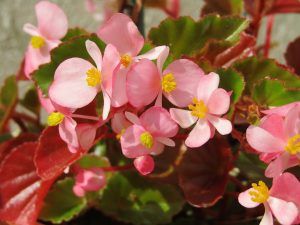 When a begonia is experiencing a lack of moisture, the leaves will start to look dry and discolored at the ends.
When a begonia is experiencing a lack of moisture, the leaves will start to look dry and discolored at the ends.
These conditions will gradually move to the center of the leaves if not attended to in time. In addition, it can have a negative impact on the flowers, especially if bud formation has already started.
One way to help correct the deficit is to apply irrigation with a watering can and then leave a plate installed in the lower part with pebbles. These pebbles will isolate the soil from the water allowing only the roots to access it.
When you notice that the plate is dry, add water again until you notice that the leaves are back to normal.
How often should we water the begonia?
The irrigation frequency will basically be determined by environmental factors. It is recommended to wait until the most superficial part of the substrate looks dry.During the summer, the irrigations will increase in frequency, applying up to 3 per week depending on where you have the begonias planted.

It is unusual that more than this is needed because begonias tend to lose little moisture through evaporation since they live in shade.In winter the reality will be different because the risks must be drastically reduced, even taking them to only one per month.
What is the best way to water the begonia?
There are two ways you can give a begonia the correct amount of water at each watering. The first is by using a sprinkler with tiny holes that allow the water to flow slowly and penetrate the earth without flooding.

The idea is to spend a few minutes doing this so that all the liquid reaches the bottom. If you have it in a pot, it will be easy to see that you have met this objective because the water will begin to drain through the holes in the base.
The other method is by plate immersion. This method is only useful for potted begonias.The process consists of placing a plate of water under the pot and giving it a couple of hours so that the roots are able to absorb what they need.

Take into account that the plate should not be very high and be so full of water because it will cause drowning.
How do we detect excess water in the begonia?
Over-watering will inevitably cause root drowning, leading to drastic plant death. However, this is not the only way to subject it to excess water, since it is not beneficial for its leaves and flowers to be wet.
For this reason, it is essential to avoid spraying them with sprinklers that give the image that they refresh them but that actually make them a focus for burns and fungus. The begonias need to be in excellent condition so that they can promote the blooms that we look forward to each year.

When irrigation does not expeditiously accompany this task, it is normal that the conditions of the plant are not suitable and the dream flowers do not appear. In any case, always remember that a plant is a living being and, therefore, you have to observe it a lot to notice what works best for it.
Maybe you are also interested in:
- Fertilize Begonias: How, When and How Much? – Sow100
- Begonias Care: [Earth, Strengthening, Humidity and Pruning]
- Cuttings of Begonia Semperflorens: [Concept, Period, Rooting and Planting]
- Begonia Cuttings: [Concept, Period, Rooting and Planting]
- Prune Begonia: [Importance, Time, Tools, Considerations and Steps]

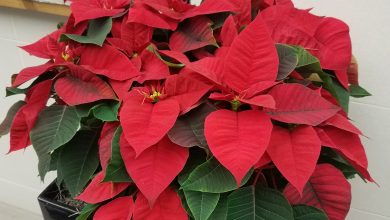

![Photo of Prune Dahlias: [Importance, Time, Tools, Considerations and Steps]](https://www.complete-gardening.com/wp-content/uploads/2022/08/prune-dahlias-importance-time-tools-considerations-and-steps-390x220.jpg)
